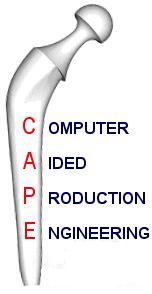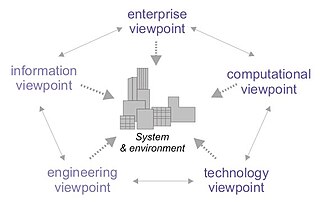
The Open Systems Interconnection model is a conceptual model that characterizes and standardizes the communication functions of a telecommunication or computing system without regard to its underlying internal structure and technology. Its goal is the interoperability of diverse communication systems with standard protocols. The model partitions a communication system into abstraction layers. The original version of the model defined seven layers.
OpenStep is a defunct object-oriented application programming interface (API) specification for a legacy object-oriented operating system, with the basic goal of offering a NeXTSTEP-like environment on non-NeXTSTEP operating systems. OpenStep was principally developed by NeXT with Sun Microsystems, to allow advanced application development on Sun's operating systems, specifically Solaris. NeXT produced a version of OpenStep for its own Mach-based Unix, stylized as OPENSTEP, as well as a version for Windows NT. The software libraries that shipped with OPENSTEP are a superset of the original OpenStep specification, including many features from the original NeXTSTEP.
The term web service is either

The Distributed Management Task Force (DMTF) is a computer software trade group which works to simplify the manageability of network-accessible technologies.
Message-oriented middleware (MOM) is software or hardware infrastructure supporting sending and receiving messages between distributed systems. MOM allows application modules to be distributed over heterogeneous platforms and reduces the complexity of developing applications that span multiple operating systems and network protocols. The middleware creates a distributed communications layer that insulates the application developer from the details of the various operating systems and network interfaces. APIs that extend across diverse platforms and networks are typically provided by MOM.
X/Open Company, Ltd., originally the Open Group for Unix Systems, was a consortium founded by several European UNIX systems manufacturers in 1984 to identify and promote open standards in the field of information technology. More specifically, the original aim was to define a single specification for operating systems derived from UNIX, to increase the interoperability of applications and reduce the cost of porting software. Its original members were Bull, ICL, Siemens, Olivetti, and Nixdorf—a group sometimes referred to as BISON. Philips and Ericsson joined soon afterwards, at which point the name X/Open was adopted.
The High-level architecture (HLA) is a standard for distributed simulation, used when building a simulation for a larger purpose by combining (federating) several simulations. The standard was developed in the 90’s under the leadership of the US Department of Defense and was later transitioned to become an open international IEEE standard. It is a recommended standard within NATO through STANAG 4603. Today the HLA is used in a number of domains including defense and security and civilian applications. The architecture specifies the following components.

Computer-aided production engineering (CAPE) is a relatively new and significant branch of engineering. Global manufacturing has changed the environment in which goods are produced. Meanwhile, the rapid development of electronics and communication technologies has required design and manufacturing to keep pace.
The international standard IEC 61499, addressing the topic of function blocks for industrial process measurement and control systems, was initially published in 2005. The specification of IEC 61499 defines a generic model for distributed control systems and is based on the IEC 61131 standard. The concepts of IEC 61499 are also explained by Lewis and Zoitl as well as Vyatkin.
A service delivery platform (SDP) is a set of components that provides a service(s) delivery architecture for a type of service delivered to consumer, whether it be a customer or other system. Although it is commonly used in the context of telecommunications, it can apply to any system that provides a service. Although the TM Forum (TMF) is working on defining specifications in this area, there is no standard definition of SDP in industry and different players define its components, breadth, and depth in slightly different ways.

Reference Model of Open Distributed Processing (RM-ODP) is a reference model in computer science, which provides a co-ordinating framework for the standardization of open distributed processing (ODP). It supports distribution, interworking, platform and technology independence, and portability, together with an enterprise architecture framework for the specification of ODP systems.
Knowledge Discovery Metamodel (KDM) is a publicly available specification from the Object Management Group (OMG). KDM is a common intermediate representation for existing software systems and their operating environments, that defines common metadata required for deep semantic integration of Application Lifecycle Management tools. KDM was designed as the OMG's foundation for software modernization, IT portfolio management and software assurance. KDM uses OMG's Meta-Object Facility to define an XMI interchange format between tools that work with existing software as well as an abstract interface (API) for the next-generation assurance and modernization tools. KDM standardizes existing approaches to knowledge discovery in software engineering artifacts, also known as software mining.

A view model or viewpoints framework in systems engineering, software engineering, and enterprise engineering is a framework which defines a coherent set of views to be used in the construction of a system architecture, software architecture, or enterprise architecture. A view is a representation of a whole system from the perspective of a related set of concerns.

Technical Architecture Framework for Information Management (TAFIM) was a 1990s reference model for enterprise architecture by and for the United States Department of Defense (DoD).
Operations Support Systems (OSS), or Operational Support Systems in British usage, are computer systems used by telecommunications service providers to manage their networks. They support management functions such as network inventory, service provisioning, network configuration and fault management.
The JAUS Tool Set (JTS) is a software engineering tool for the design of software services used in a distributed computing environment. JTS provides a Graphical User Interface (GUI) and supporting tools for the rapid design, documentation, and implementation of service interfaces that adhere to the Society of Automotive Engineers' standard AS5684A, the JAUS Service Interface Design Language (JSIDL). JTS is designed to support the modeling, analysis, implementation, and testing of the protocol for an entire distributed system.
The Open Group Future Airborne Capability Environment was formed in 2010 to define an open avionics environment for all military airborne platform types. Today, it is a real-time software-focused professional group made up of industry suppliers, customers, academia, and users. The FACE approach is a government-industry software standard and business strategy for acquisition of affordable software systems that promotes innovation and rapid integration of portable capabilities across programs. The FACE Consortium provides a vendor-neutral forum for industry and government to work together to develop and consolidate the open standards, best practices, guidance documents, and business strategy necessary to result in:














